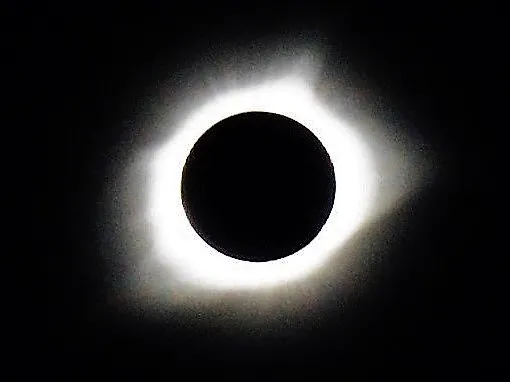'Total eclipse was totally cool'

By BERRY CRAIG
AFT Local 1360
The skies darkened right on cue at 1:22.
When the sun disappeared over Paducah, the cicadas, which usually croon toward dusk, started to sing.
The crowd clapped, cheered and whooped it up at West Kentucky Community and Technical College, my former place of employment and my vantage point for “the most exciting two minutes, forty seconds in astronomy.”
It was a tad more than 2:21 in Paducah, about as far west at the Bluegrass State goes.
Anyway, when the sun skedaddled, the campus sidewalk and parking lot lights flickered on. Fireworks popped in the distance. The western horizon pinked.
Monday’s total eclipse was totally cool.
Despite the media mega-hype, a lot of people still wondered what a total solar eclipse would be like.
George Washington Ranck’s 1872 History of Lexington, Kentucky, proved insightful to me. (I taught history at WKCTC for two dozen years.)
On Aug. 7, 1869, the future capital of the Big Blue Nation—University of Kentucky Wildcat fans for non-nationals—was “a most favorable point of observation,” for “the great eclipse of the sun,” the old book says. Consequently, “many strangers” converged on Lexington.
Out-of-town and local hosts descended on Paducah, eclipse central for my end of Kentucky.
In Lexington—255 miles east of us—the multitude “commenced to gather on the streets at an early hour in the afternoon,” Ranck explained. The throng “grew larger and larger as the momentous period approached, and by the time the great celestial wonder began its sublime, visible work, it seemed that all living Lexington had abandoned shelter and emptied itself out into the main thoroughfares.”
The crowd started collecting about 8 a.m. at WKCTC.
Eclipse 2017 event planners had their fingers crossed that the day would be sunny. It was a dog days scorcher, and clouds mostly made themselves scarce.
“The weather all day was beautiful and clear, but cool, becoming even chilly as eclipse time neared,” Ranck wrote.
It was 90-plus when the firmament faded to black in Paducah, an old river town where the Ohio and Tennessee rivers converge. The temperature didn’t seem to sag much when the sun took a powder.
When the eclipse started in Lexington, viewers first noticed “a little concave ‘gap’ in the sun,” Ranck wrote. Ditto for Paducah.
”Looks like somebody took a bite out of a Moon Pie,” a guy joshed.
Listen up, Yankees: A Moon Pie is a chocolate-coated Dixie delicacy comprised of two round graham cracker cookies, about four-inches across, with marshmallow filling. (Vanilla, strawberry and banana coatings are available, but pie purists spurn them.)
At 5:25 p.m., “every eye in Lexington was upon the sun, the horns of the crescent diminished rapidly, and at last the crescent itself became dissolved into a ball of fire,” Ranck recounted. “Rapidly it also diminished in size, and at last disappeared suddenly, like a candle blown out.”
At about 1:20 pm., Dr. Anton Reece, the college president, gave what amounted to a two-minute warning.
“The stars flashed into the heavens as if they had but that moment been created. On the right was Mercury, on the left Venus, and still further left was Mars or perhaps Saturn,” Ranck wrote.
When it got dark, I saw what looked like a planet or two.
In Lexington 148 years ago, totality came at 5:30. “The moment had arrived,” Ranck gushed, but lamented, “such as will not occur again for a lifetime…and there was something indescribably awful and solemn in this veiling of [the sun’s]…face in darkness.”
I hear western Kentucky is in for another total solar eclipse on April 8, 2024. I’ll only be 76, so I’m saving my special specs.